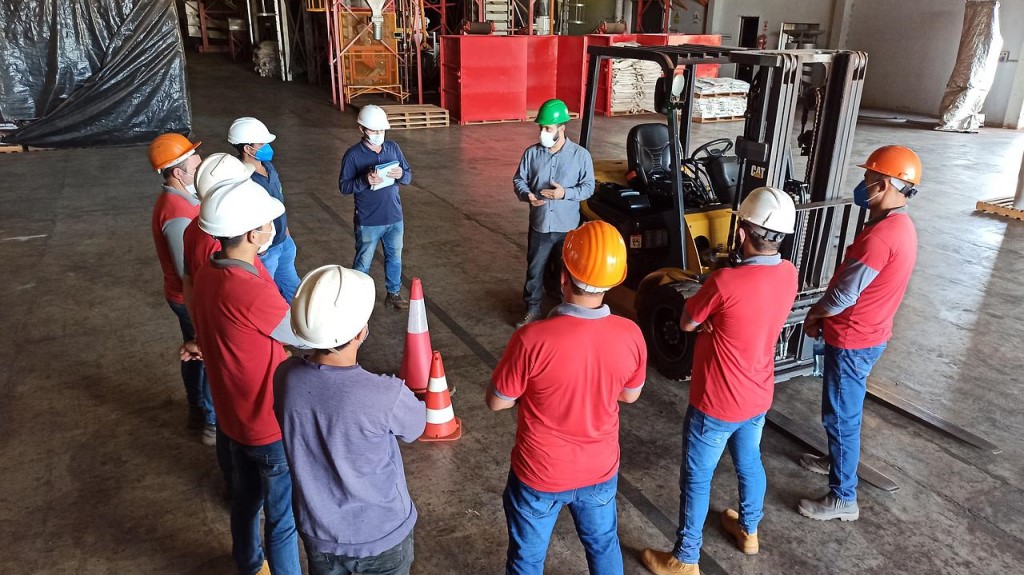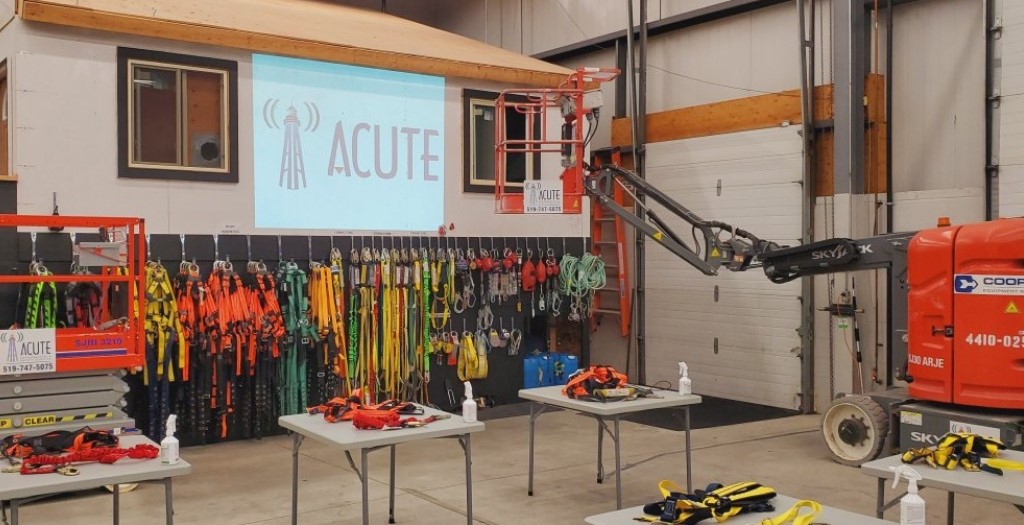If you are a business owner, supervisor, manager, or even an employee, you may be wondering why health and safety in the workplace is important. The truth is, health and safety practices promote a positive work environment where workers can feel confident and safe during their shifts.
In this article, we will go over what health and safety in the workplace is, why it is important, how to promote it, and any legal expectations you need to be aware of.
Click on each corresponding link to jump ahead:
- What Is Health and Safety in the Workplace?
- Why Is Health and Safety in the Workplace Important?
- How to Promote Health and Safety in the Workplace
- What Are the Legal Requirements in Ontario, Canada?
If you are a business owner, supervisor, manager, or even an employee and you have questions regarding health and safety in the workplace or safety training, contact the professionals at ACUTE Environmental today! We have over 100 years of combined experience and we offer health and safety training, rescue services, and consulting services.
An Overview of Health and Safety in the Workplace
1. What Is Health and Safety in the Workplace?

Health and safety in the workplace promotes the well-being, physical health, and safety of employees.
Health and safety in the workplace encompasses a range of practices and policies aimed at safeguarding the well-being, physical health, and safety of employees and others impacted by the work environment. It involves:
- Identifying potential hazards
- Assessing risks
- Implementing measures to prevent accidents, injuries, and illnesses
Overall, organizations prioritize health and safety by conducting risk assessments to identify workplace hazards such as:
- Unsafe conditions
- Unsafe equipment
- Unsafe practices
- Exposure to harmful substances
- Ergonomic issues
Through this, organizations establish protocols and procedures to ensure safe practices, including the use of personal protective equipment (PPE), emergency response plans, and reporting procedures for accidents and near-misses.
2. Why Is Health and Safety in the Workplace Important?

Health and safety in the workplace is critically important.
Health and safety in the workplace is of paramount importance for several reasons:
It protects human lives:
The primary importance of health and safety is to prevent injuries, illnesses, and fatalities in the workplace. By implementing safety measures, organizations strive to ensure that employees can work without fear of harm and return home safely to their families at the end of the day.
It enhances employee well-being:
A safe and healthy work environment fosters the physical, mental, and emotional well-being of all employees. It reduces work-related stress, fatigue, and the risk of occupational illnesses. When employees feel safe and supported, their job satisfaction, productivity, and morale tend to improve.
It fosters positive organizational culture:
Emphasizing health and safety in the workplace fosters a positive organizational culture. It demonstrates that the organization values its employees and their well-being, which, in turn, promotes employee loyalty, engagement, and satisfaction, leading to a healthier and more harmonious work environment.
It minimizes productivity loss:
Accidents, injuries, and illnesses can result in significant productivity losses for organizations and workers. When a worker is injured or falls ill, their absence, medical leave, or reduced capacity can disrupt workflow, affect project timelines, and lead to increased costs. By prioritizing health and safety in the workplace, organizations can minimize such disruptions and maintain productivity levels. Minimizing injuries and disruptions also means workers will take less time away from work. Click here to learn about the most common workplace accidents and injuries.
It promotes legal compliance:
Compliance with health and safety regulations is mandatory in most jurisdictions. Failure to meet these obligations can lead to legal consequences, fines, repetitional damage, and even closure of the business. Prioritizing health and safety in the workplace helps organizations maintain compliance with applicable laws and regulations. Check out the Occupational Health and Safety Act (OHSA) for more information.
3. How to Promote Health and Safety in the Workplace

Foster a positive work environment where individuals are not afraid to express their concerns.
To make a workplace safe, especially in industries such as construction and other blue-collar jobs, it is crucial to implement comprehensive safety measures. Here are some ideas of helpful safety actions to consider:
Develop a safety program:
Establish a formal safety program that outlines safety policies, procedures, and expectations. Communicate these to all employees and provide training on safety protocols specific to the industry and job tasks.
Conduct risk assessments and inspections:
Regularly assess potential hazards in the workplace. Identify and evaluate risks associated with equipment, machinery, tools, work processes, and the work environment. This helps prioritize safety measures and determine appropriate controls.
Provide safety training:
Ensure that all employees receive proper safety training. Training should cover topics such as hazard recognition, safe work practices, propose use of tools and equipment, emergency procedures, and the use of PPE.
For instance, if your employees work at heights or work in confined spaces, ensure they have their working at heights training and confined space entry awareness and confined space rescue training.
For those who have already received their training, ensure it is up to date.
Provide safety equipment and tools:
Always provide your workers with appropriate safety equipment and tools for the job. This may include hard hats, safety goggles, gloves, high-visibility vests, respiratory protection, fall protection equipment, or hearing protection. Whatever the equipment is, ensure that employees are trained in their proper use and maintenance.
For instance, if your employees work at heights and require a harness, ensure they have their fall protection training. Or if they require the use of a respirator, make sure they are trained in respiratory protection and fit testing.
Enforce safety policies:
It is one thing to recommend safety policies but it is another to enforce them. Employees must be encouraged to report safety concerns and near-miss incidents, click here to find out how to encourage incident reporting. If a lack of reporting is an issue in your workplace, implement disciplinary measures for non-compliance to ensure accountability and health and safety in the workplace.
Encourage employee involvement:
Create a culture of safety by involving employees in safety committees, safety meetings, and safety improvement initiatives. Encourage them to report safety concerns, provide feedback, and contribute to hazard identification and risk mitigation efforts.
Remember, ensuring health and safety in the workplace is an ongoing process. It requires regular:
- Monitoring
- Engagement
- Adaption to changing conditions
By prioritizing health and safety in the workplace, all jobs, regardless of the industry, can significantly reduce the risk of accidents, injuries, and illnesses in the workplace.
4. What Are the Legal Requirements in Ontario, Canada?

All legal expectations for health and safety in the workplace are outlined by the OHSA.
In Ontario, Canada, all health and safety laws and standards are provincially regulated. These regulations can be found under the Occupational Health & Safety Act (OHSA), which is enforced and administered by the Ontario Ministry of Labour, Immigration, Training and Skills Development.
It is critically important to follow these laws and regulations revolving around health and safety in the workplace because non-compliance can lead to wealthy fines upwards of $100,000 and in extreme cases, even imprisonment.
The OHSA outlines many procedures relating to health and safety that must be followed. For instance, Section 9 of the OHSA states that a joint health and safety committee is required:
- “(a) at a workplace at which twenty or more workers are regularly employed;
- (b) at a workplace with respect to which an order to an employer is in effect under section 33; or
- (c) at a workplace, other than a construction project where fewer than twenty workers are regularly employed, with respect to which a regulation concerning designated substances applies.”
Similarly, section 8 of the OHSA outlines the mandatory selection of a health and safety representative stating that “at a project or other workplace where no committee is required under section 9 and where the number of workers regularly exceeds five, the constructor or employer shall cause the workers to select at least one health and safety representative from among the workers at the workplace who do not exercise managerial functions.”
Work With ACUTE Environmental

You can rely on ACUTE for all your health and safety training requirements.
If you are in charge of supervising health and safety in the workplace and are looking for high-quality online safety training or in-person safety training, book a course with ACUTE. Also, if you have any questions regarding what you need to assemble before safety training, contact us.
Here are some of the benefits of working with ACUTE:
- Open Door Instructor-Student Partnership – ACUTE’s training services emphasize client participation, staff foster relationships with clients and serve as a touchstone for advice anytime moving forward.
- Serving Your Team and Industry – With a vast array of clients in manufacturing, construction, health, academic, and government sectors, ACUTE brings the best safety practices from across the spectrum to your workplace.
- 100 Years Combined Experience – ACUTE provides comprehensive health and safety training, on-site safety services, and consulting services. With over 100 years of combined experience, our company staff offers more than theoretical or abstract ideas. ACUTE offers solutions!
- Track Record of Success – ACUTE is rated 4.9/5 stars on Google reviews, demonstrating our commitment to our clients, our quality, and passion for training.
Take a look at our course calendar, and find a date that works for you! We offer courses such as:
- Advanced Working at Heights and Rescue
- Lift Truck Operator
- Elevating Work Platforms
- Confined Space Rescue
For a complete list of our training courses, click here.
Hours of Operation and Contact Information:
Monday-Friday: 8:00 AM – 5:00 PM
Saturday-Sunday: Closed
Phone: (519) 747-5075
Fax: (519) 747-4608
Email: info@acuteservices.com
What Our Customers Are Saying…
We were referred to ACUTE on behalf of our employer for an n95 mask fitting – the staff here are professional, personable, and informative.
I’d come back here for any safety-related training in a heartbeat.
Acute has been a staple in supporting my companies over the years and have always delivered quality and dependable service. Training programs are top shelf and a great facility for practical application. couldn’t recommend them more. keep up the great work folks.
Acute is recognized and respected as a people organization and they have been doing it right for a long time.

